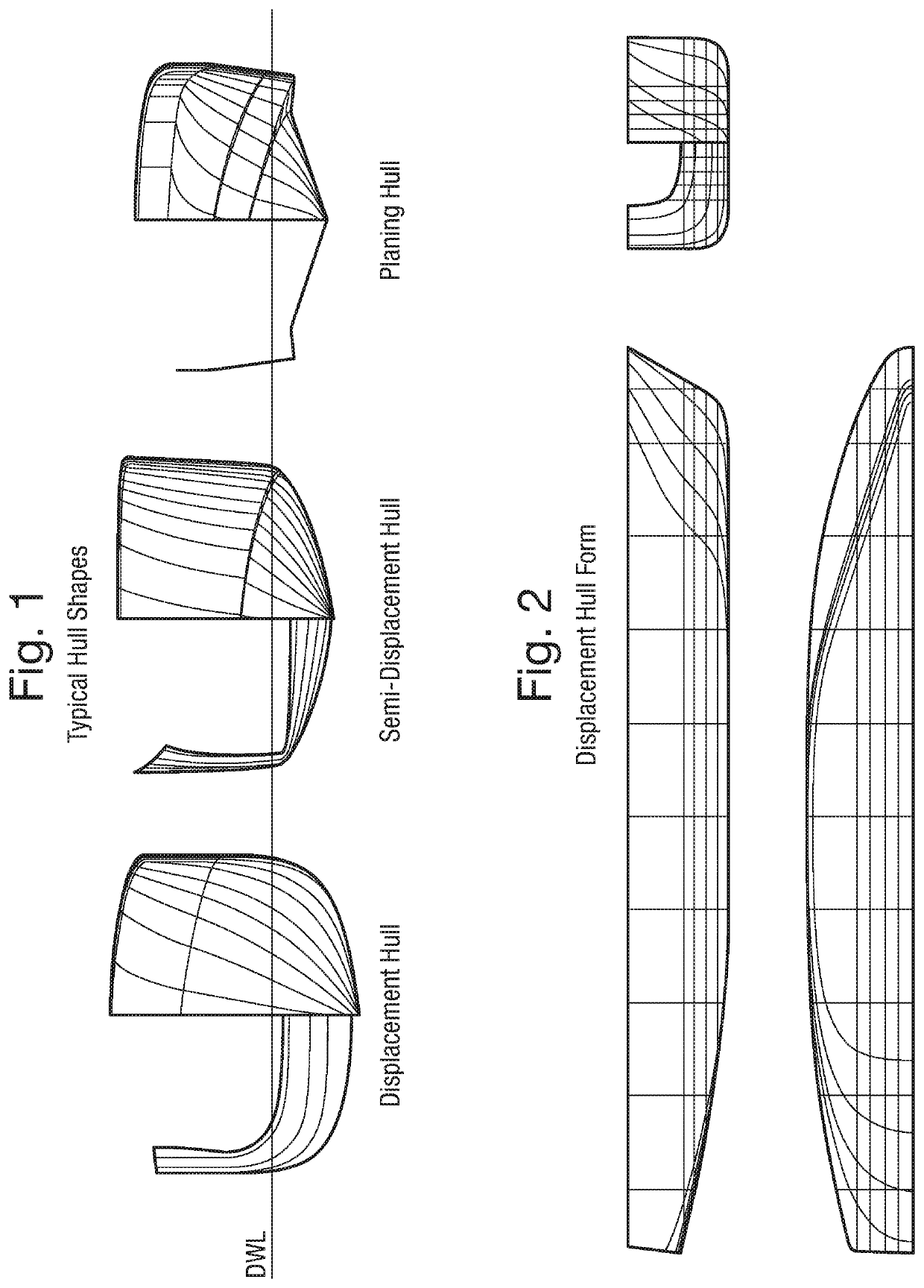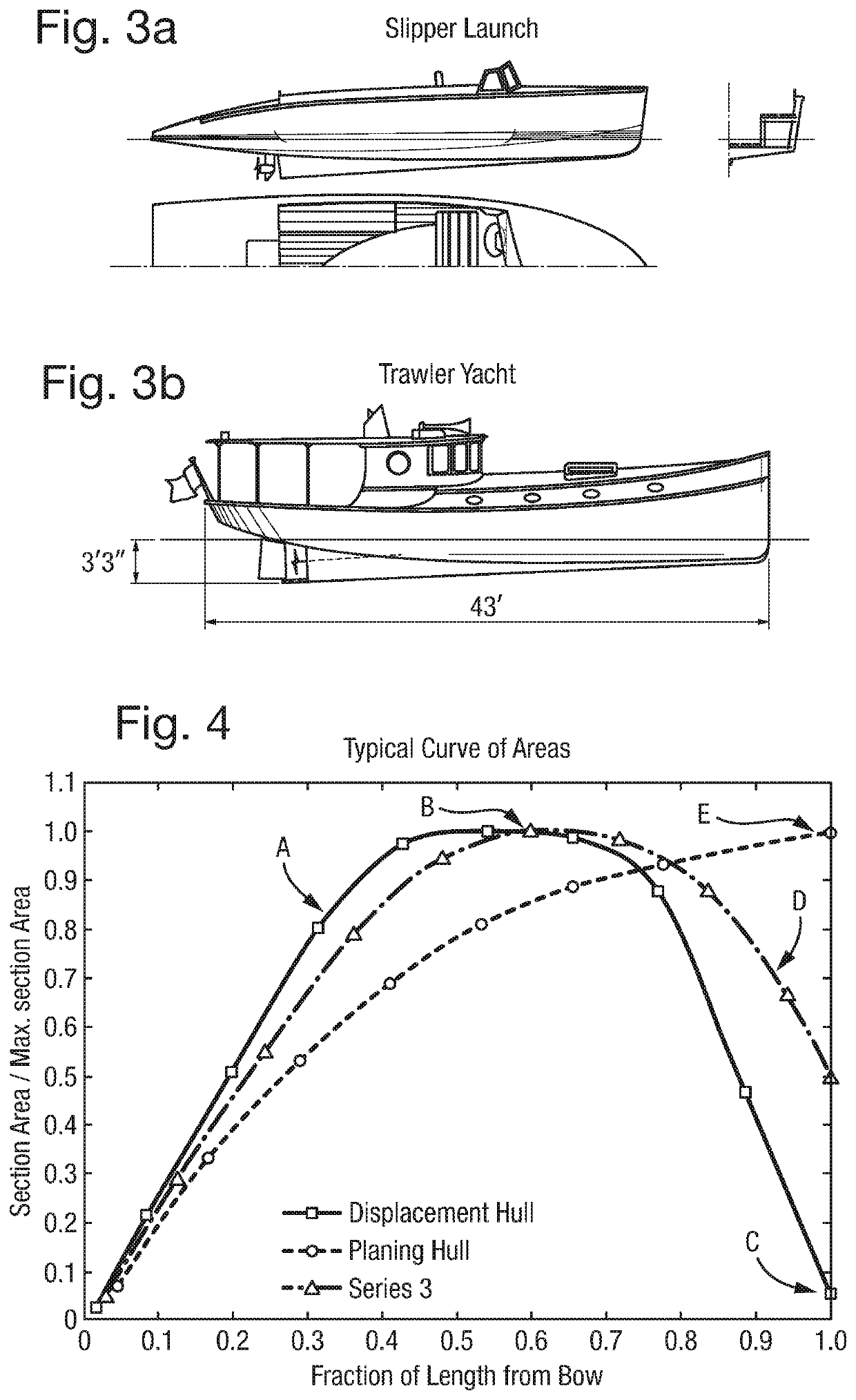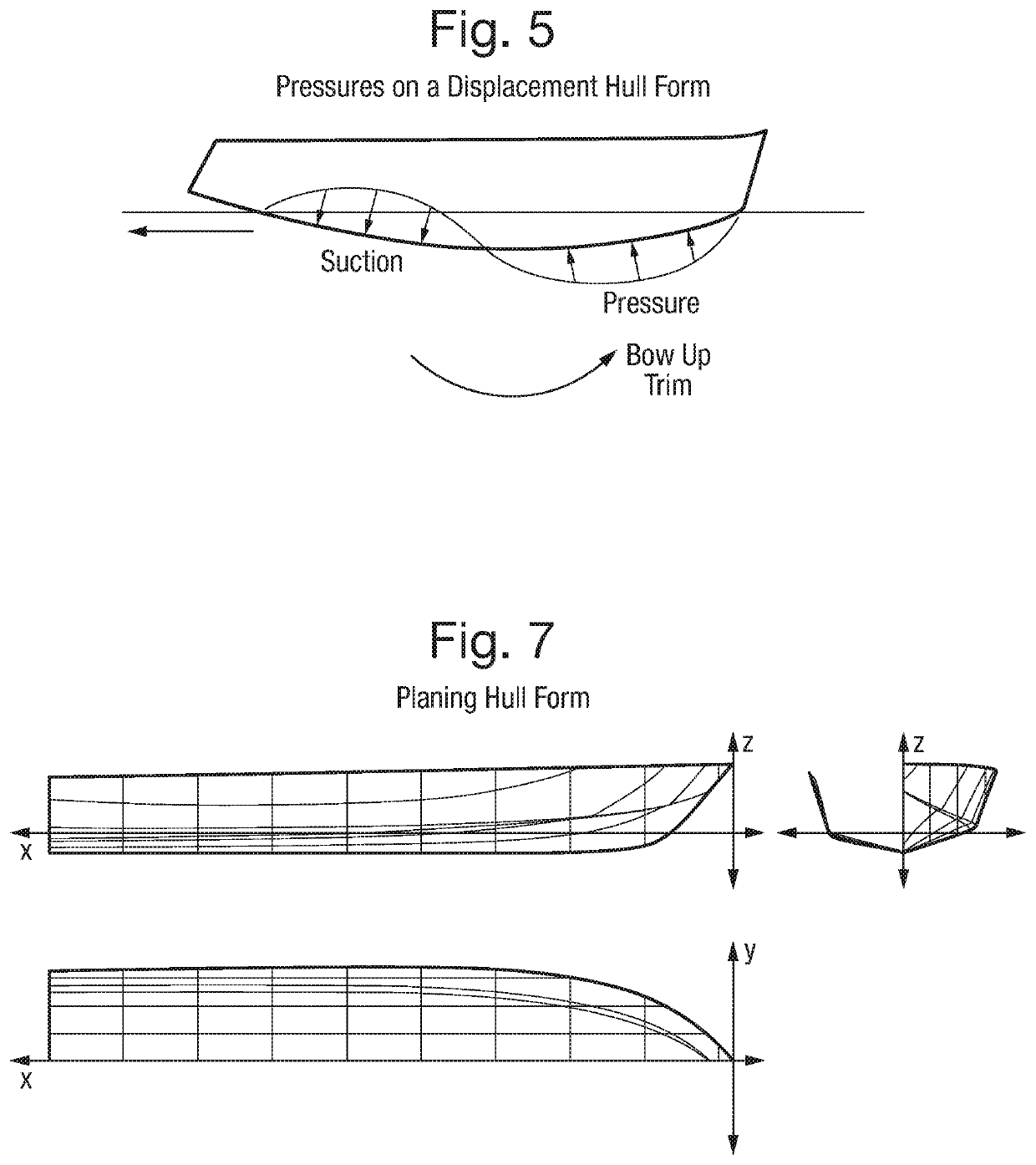Powerboat
- Summary
- Abstract
- Description
- Claims
- Application Information
AI Technical Summary
Benefits of technology
Problems solved by technology
Method used
Image
Examples
Embodiment Construction
[0048]A powerboat 1 according to the present invention will now be described with reference to FIGS. 10-18.
[0049]As shown in FIGS. 10 and 11, the powerboat 1 of a first embodiment of the invention comprises a hull 2, a plurality of dynamically adjustable hydrofoils 3 positioned towards the rear of the hull 2, below the design waterline, and a control system 14 for the hydrofoils.
[0050]The hull 2 is shaped similarly to hulls typically used for operation in a displacement mode. The cross sectional area of the hull 2 reduces from the midship point to the transom (i.e. to the stern), such that the immersed area of the transom at rest is less than 40%, preferably less than 30%, more preferably less than 20%, and most preferably less than 10% of the maximum hull cross sectional area. In other words, the immersed volume of the hull 2 reduces from the midship section to the rear of the hull 2. This form of section distribution gives rise to a curve of areas (line A in FIG. 4) that correspon...
PUM
 Login to View More
Login to View More Abstract
Description
Claims
Application Information
 Login to View More
Login to View More - R&D
- Intellectual Property
- Life Sciences
- Materials
- Tech Scout
- Unparalleled Data Quality
- Higher Quality Content
- 60% Fewer Hallucinations
Browse by: Latest US Patents, China's latest patents, Technical Efficacy Thesaurus, Application Domain, Technology Topic, Popular Technical Reports.
© 2025 PatSnap. All rights reserved.Legal|Privacy policy|Modern Slavery Act Transparency Statement|Sitemap|About US| Contact US: help@patsnap.com



